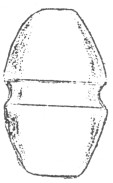The Early Years Of Telegraph In The United States 1843-1851
by Shirley Patocka
Reprinted from "INSULATORS - Crown Jewels of the Wire", August 1981, page 18
The man most
readily identified with early telegraphy in the United States is Samuel F. B.
Morse. He was a fine artist who, with absolutely no background along that line,
became fired with the idea of sending messages over a wire. From 1832 to 1837 he
worked with various gifted men who all contributed ideas and technical data to
help him with his plans.
In December of 1837 he appealed to Congress for
monetary aid. Nothing was done by the government until 1843, when a bill was
passed by Congress awarding Morse a grant of $30,000.00 to run a test line
between Washington and Baltimore, a distance of 40 miles.
The line was started
underground with the wire in a tubular lead shield. The first few miles cost
$20,000.00, which was two-thirds of the entire grant! This line, when tested,
was found to be riddled with short circuits. No money had been spent on nonsense
like insulation!
Ezra Cornell, Morse's construction engineer, suggested
stringing bare wires overhead, and the entire line was forthwith strung from
trees and poles using bottle necks as insulators. The first message over this
hastily constructed system was: "What Hath God Wrought?"
In 1845 THE
MAGNETIC TELEGRAPH CO. was founded by Morse and a group of associates. Various
modes of insulation were tried. Glass bureau knobs were tried and used for a
time. Little blocks of grooved glass with coated iron wires were tried.
Brimstone, gum shellac, resin and gutta percha were all used alone or in
combination
But it remained for William M. Swain to introduce the
"egg" insulator in 1851. He was sure that this was the insulator of
the future, and it was used to replace all other types of insulation the
company's lines.
The telegraph has come a long way since that time long ago, and
many sizes, shapes and colors of insulators have been manufactured, but some of
these early magnificent "eggs" still survive!

| 